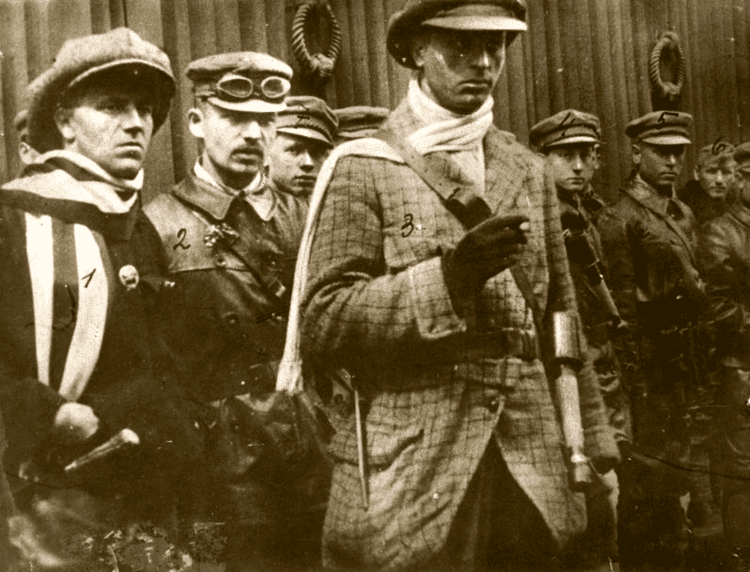 | ||
The Red Terror in Hungary (Hungarian: vörösterror) was a series of atrocities aimed at crushing political rivals during the four-month regime of the Hungarian Soviet Republic in 1919. It was so named because of its similarity to the Red Terror in Soviet Russia in both purpose and effect. It was soon followed by the White Terror against communists.
History
In March 1919, Communists, in collusion with Social Democrats, took control of the Hungarian government, after president Mihály Károlyi stepped aside. Soon after, the communists, led by Béla Kun, staged a coup and seized absolute power, proclaiming the establishment of the Hungarian Soviet Republic.
Committed ideologues within the party, such as Georg Lukács and Tibor Szamuely, argued for the necessity of "revolutionary terror." Tibor Szamuely wrote in the pages of the Vörös Újság (Red News): "Everywhere counter-revolutionaries run about and swagger; beat them down! Beat their heads where you find them! If counter-revolutionaries were to gain the upper hand for even a single hour, there will be no mercy for any proletarian. Before they stifle the revolution, suffocate them in their own blood!" With their support, József Cserny organized a detachment of some 200 agents known as "Lenin Boys" (Lenin-fiúk), who sought out and crushed "counter-revolutionary" activities in the Hungarian countryside. Similar groups operated within Budapest.
Within two months of taking power, the Communist leadership tried to restore Hungary to its pre-World War I boundaries, first by recapturing parts of present-day Slovakia, and when that invasion dissolved, turning their troops against the Romanian army to recapture Transylvania. These unsuccessful recapture adventures, as well as a string of failed domestic reforms, dampened popular support for the Communists, and on June 24 the Social Democrats attempted to regain control of the government. This attempted coup failed, and in its wake the Communist leadership carried out a string of terror reprisals to quash opposition and eliminate the strongest opponents to their regime. "Requisition patrols" looted homes. The paramilitary groups arrested putative or real enemies. Numerous atrocities, executions and crimes have been recorded.
Revolutionary tribunals carried out 590 executions, some of which were for "crimes against the revolution", but the numbers included also common criminals and regular offenders; other sources have placed the number of dead between 370 and 587.
The Hungarian Soviet Republic fell in the first week of August 1919, when Romanian forces deployed to fend off the Hungarian invasion pushed all the way into Budapest. Kun escaped into Russia; Szamuely fled to Austria but was caught and killed there. József Cserny was arrested and tried in November 1919; the Hungarian Bar Association refused to defend him at trial, so a lawyer was appointed by the court. He was executed in December.
As was common in the political unrest of the 20th century, the Red Terror was answered by a wave of counter-reprisals once the Communist leadership fled. These attacks on leftists, remaining revolutionaries and Jews are known as the "White Terror" and were far more brutal, extensive and indiscriminate than the Red Terror.
